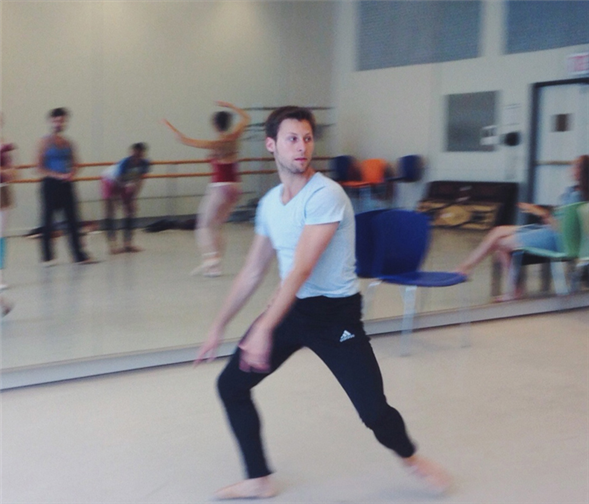Translate Page

Integrating a wide variety of art forms in a collaborative process, the troupe is helping erase notions of ballet as old-fashioned or uptight. Take its latest premieres: Invisible Divide , a full company piece set to songs by music director Ellis Ludwig-Leone and inspired by the photographs of Paul Maffi, and an as-yet-unnamed second ballet, which echoes the photographs of Dafy Hagai with music by Mark Dancigers. Showing at NYU's Skirball Center on November 4th and 5th alongside two works from the repertoire, the creations beg the intriguing question: If a picture can tell a thousand words, then how many words are expressed through dance motivated by photographs?
These multidisciplinary investigations underline Schumacher's link to one of ballet's iconic renegades: George Balanchine. "As a dancer with New York City Ballet [which Balanchine co-founded], I fell in love with the ballet Agon," Schumacher explains. "It was created through the collaboration of George Balanchine and Igor Stravinsky. I thought, 'If these two geniuses at the top of their craft can work together, compromise, and create a joint vision, then perhaps if young artists collaborate similarly, ballet will evolve in the impressive ways other art forms have. The gestation process of the writing, choreographing, painting, photographing -- together we can create something new for ballet today."
BalletCollective's past collaborators have included poets and painters, and Schumacher specifically opted to add photographers to the roster. "I chose photography this round, not only because as a curator I want to create the best new work, but also because it's so relevant," he says. "We're all photographers with our phones. Photography says so much in a small amount of time."
For Invisible Divide, Schumacher commissioned Maffi to create a series of characters with a sense of person, space, and time. Maffi delivered 12 images, and Schumacher and Ludwig-Leone perceived them in similar ways. "We saw someone who is lonely, but not by himself all the time—different moods of the 'young man,'" Schumacher explains. "This inspired a series of songs Ellis wrote, and as he sent them to me, I just kept saying, 'Keep going! Keep going!'"
Alternately, in response to Israeli photographer Hagai's pictures, Schumacher crafted a more abstract piece about homecoming as a duet for two men (David Prottas and Taylor Stanley), a pairing he feels is not yet common enough in today's ballet world. "I wanted to create on these two great dancers in general, but I also felt like this type of duet should exist," he says. "Watching two men dance together can be a thrilling, visceral experience."
While his collaborators were busy working on the photographs and music – and discussing their work over Skype, keeping things current in all ways – Schumacher began choreographing in June. He initially worked in the studio alone, as he always does before bringing in other dancers. "I film myself improvising to music," he says. "Barely any of that ever makes it into the ballet, but it enables me to understand what it feels like to dance to the music, what rhythms come out. Then, once I'm in the studio with the dancers and music, I have a good idea of the structure of the piece. However, I develop 90 percent in the room with dancers. The way I do a step looks different than how each dancer does it, and sometimes they do something different that I like better. They aren't always generating phrases, but the piece is definitely indebted to the dancers and who, specifically, is in the room at the time."
This final aspect of collaboration, between choreographer and dancers, makes Schumacher's choice of performers particularly important. To that end, when he formed his company he picked dancers from within his own NYCB pool. "If I'm making intimate, dancer-specific work, it's best to work with people I know," he says. "I've danced with these performers for thousands of hours. Who better to work with?"
In all cases, he adds, he relies on his creative partners throughout the process of developing a work. "What's great about the process is having an artist or composer look at my choreography through the lens of their own vision," he says. "Their feedback is largely spot-on. So it helps me think about choreography in a wider sense, and how it has potential to bring all of the art forms together to create something cohesive. My collaborators have taken me places I wouldn't have gone alone and vice versa."
---
Lauren Kay regularly writes about dance for TDF Stages
Top photo, of Schumacher in rehearsal, by Devin Alberda. Middle photo by Matthew Murphy.